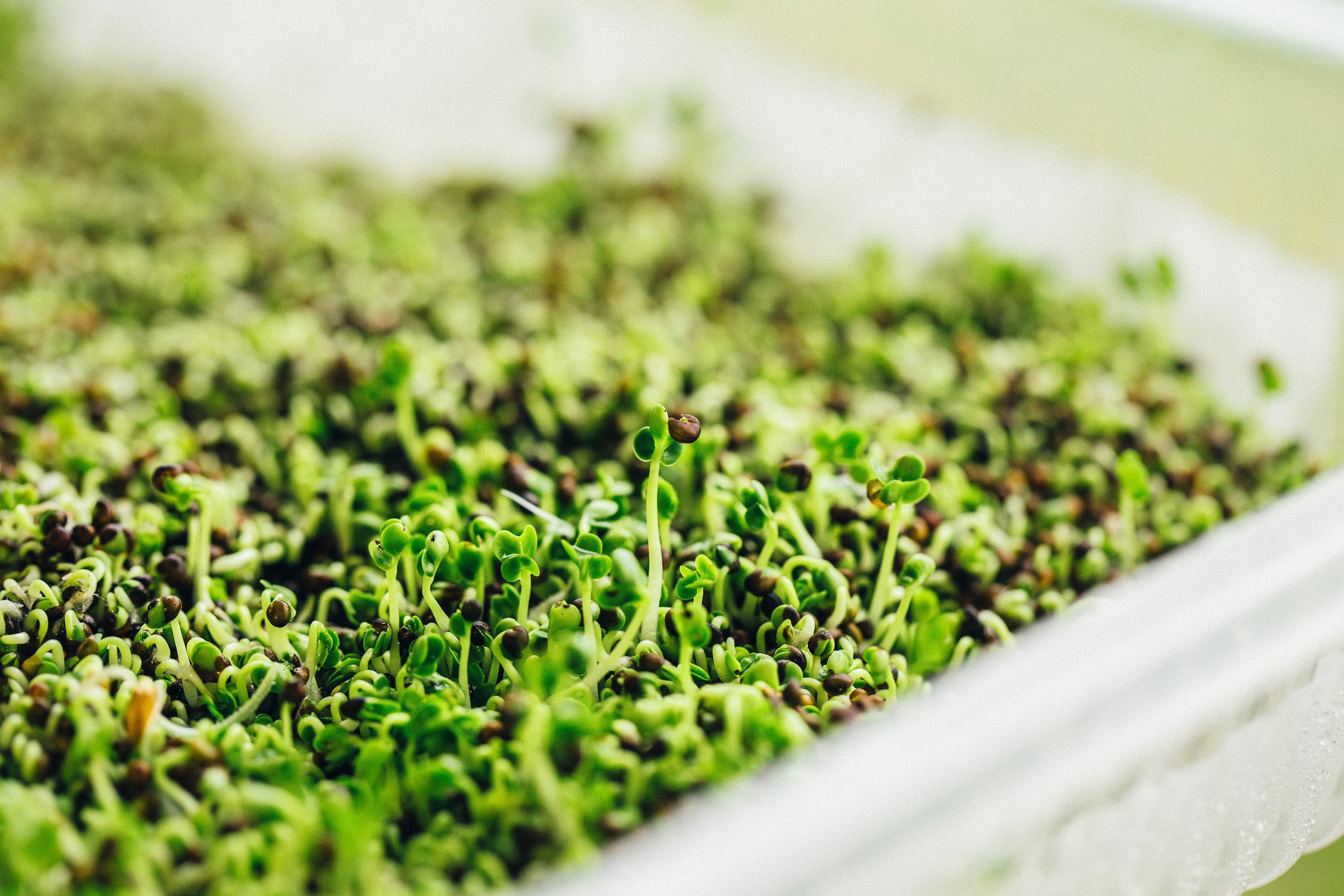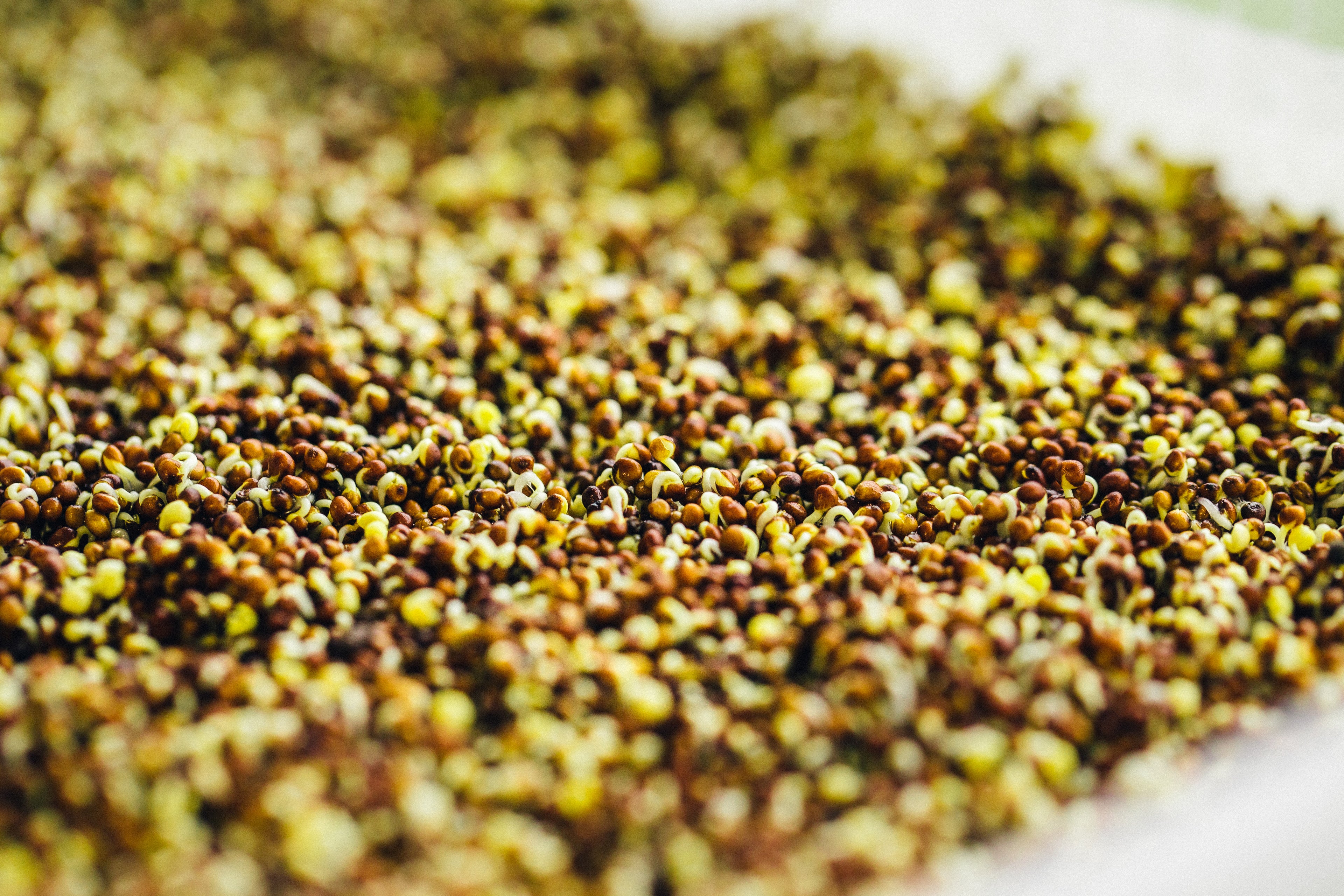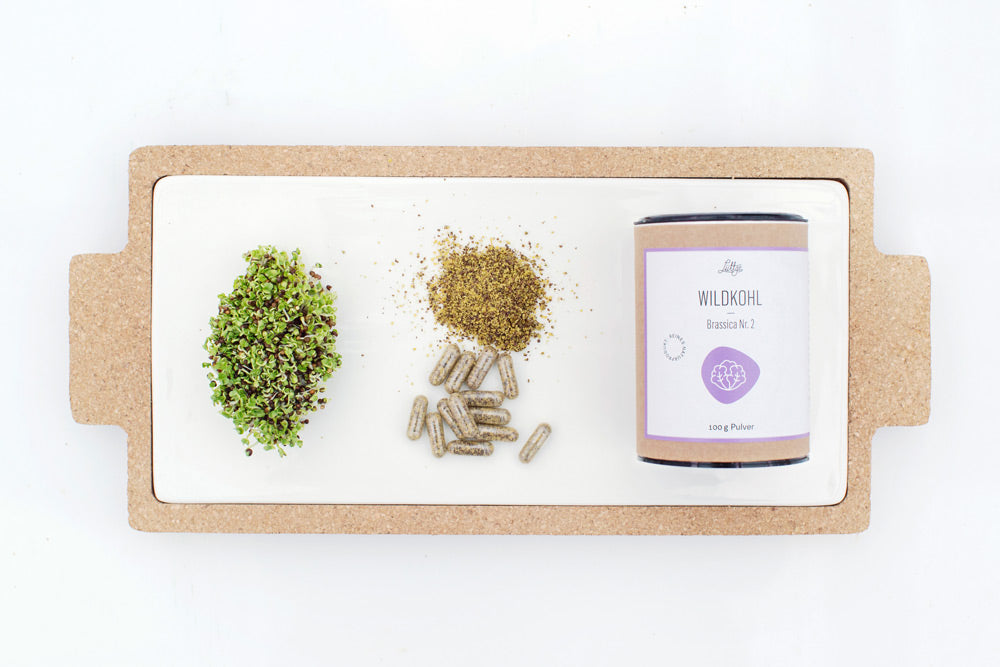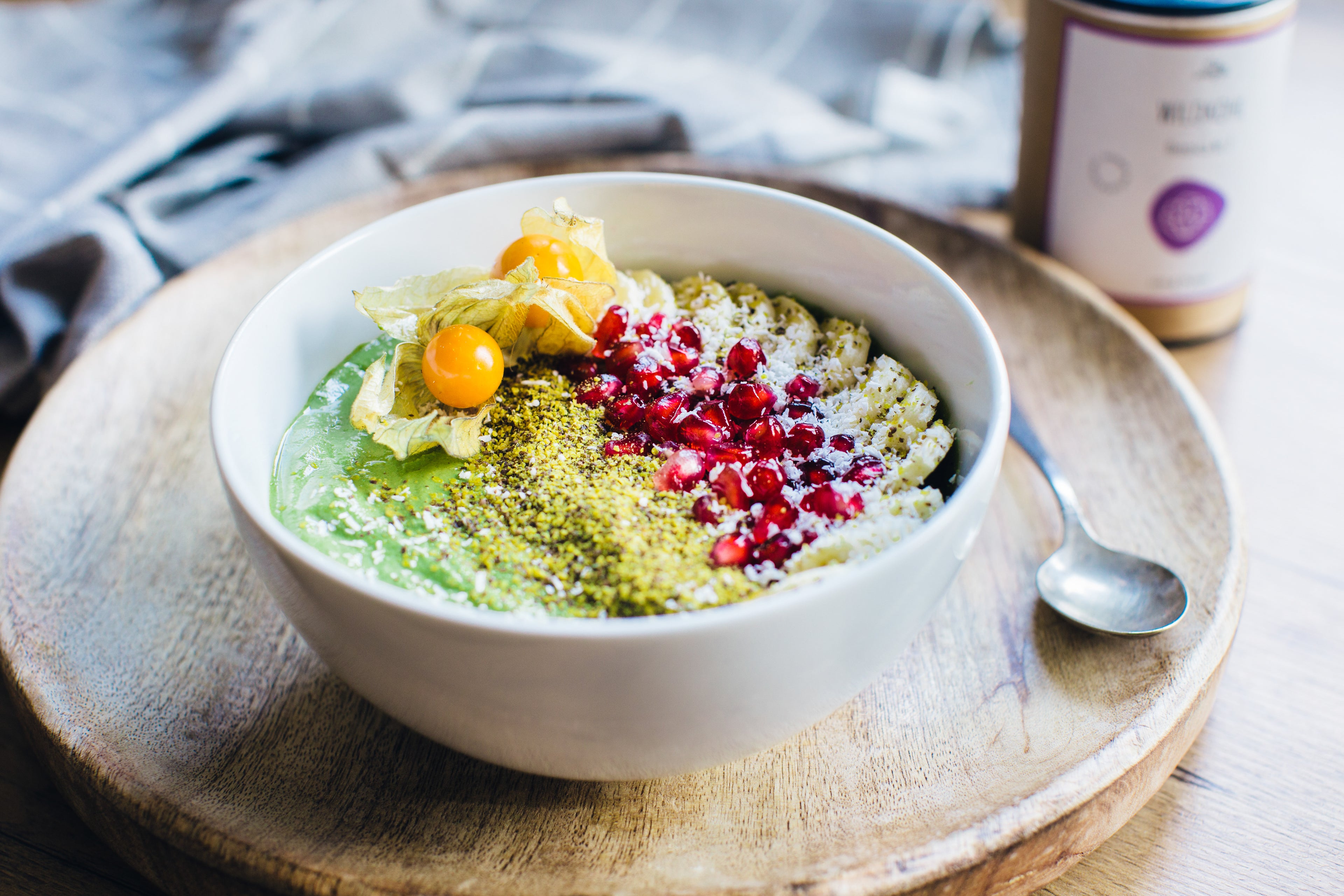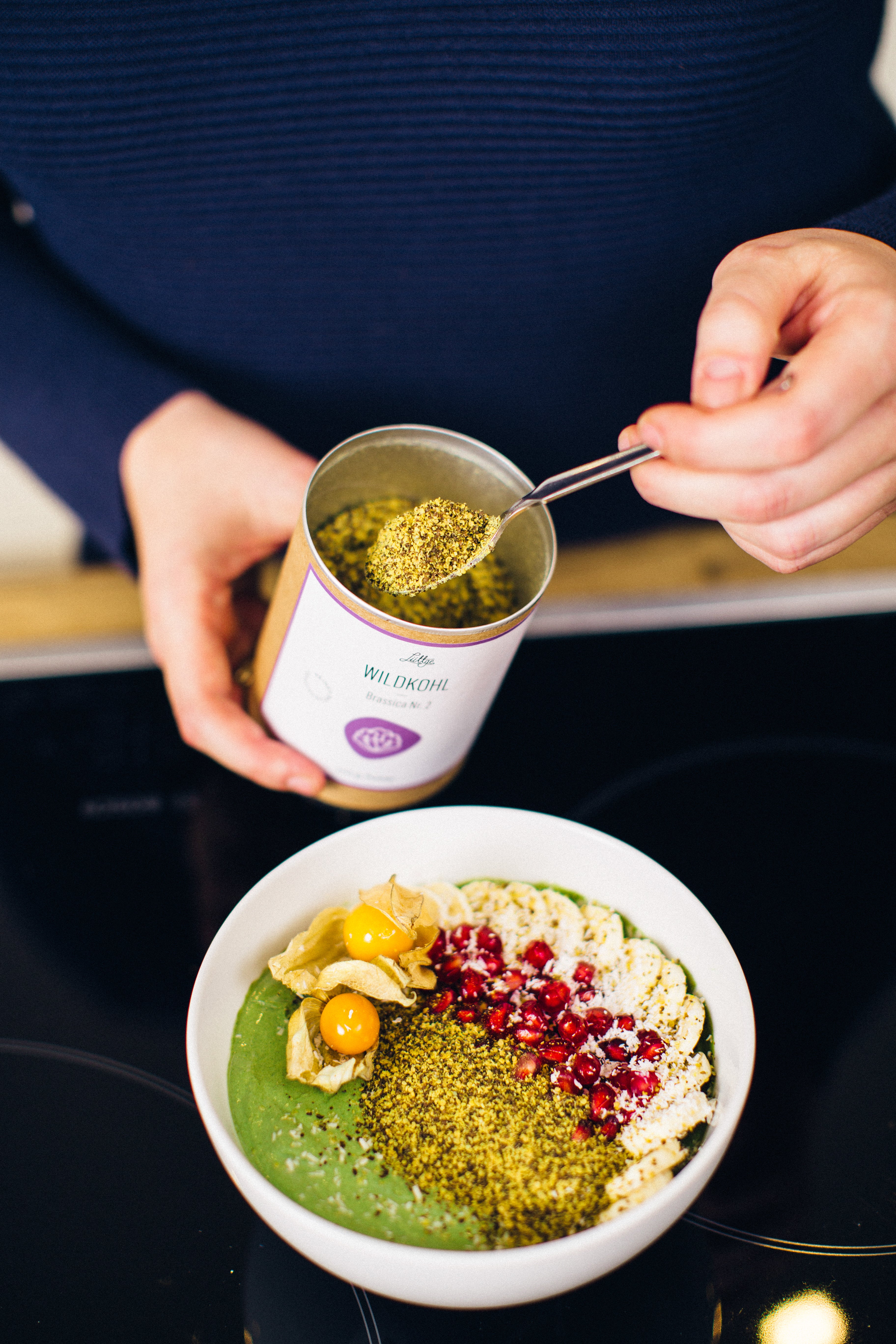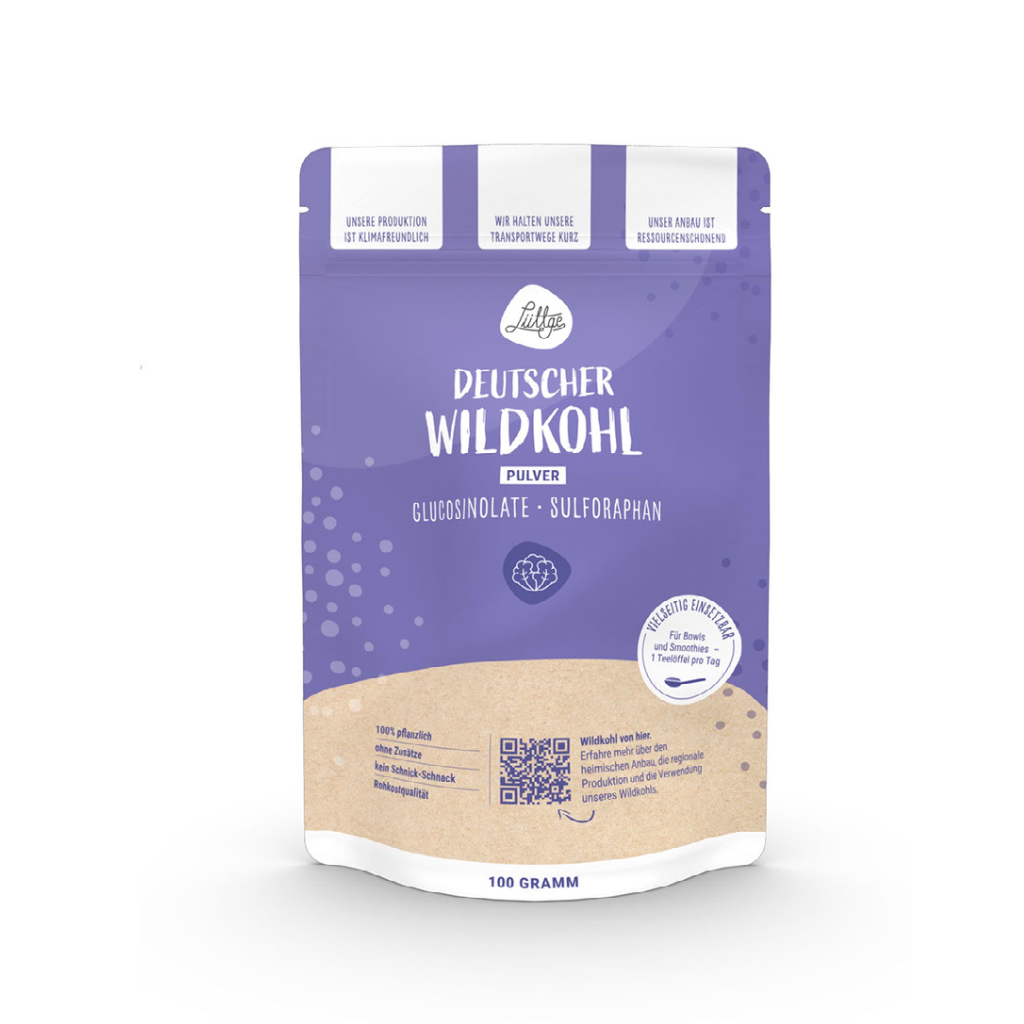History of creation
At the beginning of the 1990s, Rudolf began to crossbreed various types of cabbage in his horticultural business in Lower Saxony. The aim was to create a cabbage crossbreed with the highest possible glucosinolate content. Through lengthy backcrossing, Brassica varieties with a high wild form character were created. Brassica No. 2 is a crossbreed of broccoli x kale x Brussels sprouts.
The secret lies in the processing
Since sprouts have the highest glucosinolate content, only the sprouts of this vegetable are used to produce Lüttge wild cabbage. It is known that cabbage plants produce glucosinolates to protect themselves from predators. For this reason, the sprouts are exposed to various stress scenarios such as light, movement and drought stress in order to increase the glucosinolate content. They are then gently dried and ground.
About 3 g of powder contains as much glucosinolate as 300-400 g of raw broccoli. That is 0.80-0.90 mg of sulforaphane (subject to natural fluctuations).
Glucosinolates and sulforaphane
Glucosinolates (mustard oils or mustard glycosides) are secondary plant substances. They are mainly found in plants of the cruciferous family (Brassicacae) and are responsible for the typical hot, spicy taste. In the body, glucosinolates are converted into sulforaphane, among other things.
Since the glucosinolate content decreases as the plants grow and mature, seedlings usually have the highest levels. The content in wild forms can exceed the content in cultivated plants by a factor of 1000. A large part of the glucosinolate is lost when cooking or heating brassicas (35-60%), which is why the vegetables should be eaten raw if possible.
Ingredients in comparison*
*100 g Lüttge wild cabbage powder compared to 100 g fresh weight of various vegetables
Our tip
Find out about the ingredients of wild cabbage in specialist literature, from alternative practitioners, doctors or nutritionists, and you can also find a lot on the Internet. Glucosinolates and sulforaphane, for example, are little known - and nature has already come up with a lot. It is important to look for good sources.
